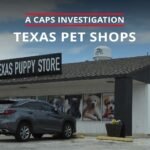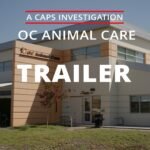Breeder: Felts, Gary
Business name: Black Diamond Kennel
Address: 38383 C60
City, State Zip: Kingsley, IA 51028
Year: 2015
USDA License: 42-A-0757
Date of CAPS Investigation: 2015-04-17
Time of CAPS Investigation: 14:56
CAPS investigation: 04/17/15; kennel visited at 14:56
Weather at time of investigation: 76 degrees Fahrenheit and partly cloudy
Approximate number of dogs observed at time of investigation: 167 dogs, 30 puppies
Breeds: Boxers, Mastiffs, Basset Hounds, English Bulldogs, Dachshunds, Chihuahuas, Labradors, Golden Retrievers, Standard Poodles, Boxer, Cane Corsos
Felts’ property had most of its kennel structures on the east end of the property, with an additional whelping building located at the northwest end of the property and just north of Felts’ residence. I spoke to Gary Felts (Caucasian male, about 60 years old, 5’6”, 165 lbs., with short gray hair, glasses, and who said he has a back injury from an injured disc). Gary spoke slowly and with a slur when I met with him, and he walked slightly hunched over.
Gary told me that his breeding business is his only business and that he had 167 breeding dogs. He also said that he uses a broker named Pixie Pals aka Becky to deliver his puppies to pet stores. Gary described how he picks up other breeders’ dogs, including his veterinarian’s, and takes them to his broker. He said, “My vet raises Bulldogs. And Becky buys all his Bulldogs, and I haul them. I haul everybody up north. I haul their dogs.” He then added, “I go up north cause I got to get my dogs vet-checked. They’re going out of state. I go up and get my dogs vet-checked, and everybody that’s got dogs that are going up to Becky brings them to doc’s office; gets them vet-checked. We get them all vet-checked and then I take them. It’s about a hundred miles from Sioux Center. It’s down in Pender, Nebraska. And then she meets the Nebraska people. It’s at a friend of mine’s place. I go up there with all the dogs up north and all the people in the Nebraska area brings their dogs there, and she’s got just one pick up. And she just picks up all the dogs; she’s got a big van.”
Gary also told me that all of his Labradoodles and Goldendoodles are sold in New York. I asked him, “The only downside though, is if it all goes through a broker, you get paid in check, right?” Gary responded, “You get paid what, however you want to. You can get paid in cashier’s checks, you can get paid in money orders.” I then said, “Yeah, see you don’t have to report all that if it’s a cashier’s check.” Gary smiled, nodded, and responded, “That’s exactly right.” He then explained to me that his breeding business is his only one.
Just northeast of Gary’s residence was a building surrounded by old kennel cages and cage parts, and Gary said it was his whelping building. South of the building and east of Gary’s residence was a metal barn with three indoor/outdoor runs on the eastern and western sides. The runs had wire walls and concrete floorings. The outdoor floorings had bits of feces, sawdust, feed, and shredded paper covering them. There were feces and bits of debris packed under a four-inch-wide PVC pipe running along the flooring at the backs of the pens along the barn walls (Sec 3.11 Cleaning, Sanitization, Housekeeping, and Pest Control (a) Cleaning of primary enclosures). Metal doggie-doors separated the indoor and outdoor runs. However, the northwestern pen, containing two Cane Corso puppies, did not have a door or windbreak on its entrance (Sec 3.4 Outdoor Housing Facilities (b) Shelter from the elements (3) wind breaks). The outdoor pens had plastic water dishes on the floorings and a combination of self-feeders and food bowls on the walls and floorings on the eastern side. The indoor pens had shredded paper covering the floorings. Each pen held two to three Mastiff or Boxer puppies or dogs.
East of that building were three kennel buildings with elevated indoor/outdoor wire cages on the eastern and western sides. One building had ten cages on each side, another had 15 cages on each side, while the third had 20 cages on each side. The larger building was a Sundowner-type structure with each side having a row of ten cages stacked over another row of ten cages. The cages had wire walls and floorings and plastic and wooden framing. Each cage held two to three dogs of various small breeds, though the two buildings with fewer cages also contained English Bulldogs and Basset Hounds. I got a close-up look at the larger Sundowner-type structure and the building with 15 cages on each of its two sides, and I saw two to three days of fecal accumulation below the cages. The feces was piled up below the plastic sheeting of the Sundowner building and on the cement flooring below the outdoor cages of the other structure. The Sundowner structure had the most accumulation, with manure covering an area equal in size to the cages that each contained two to three small-breed dogs (Sec 3.11 Cleaning, Sanitization, Housekeeping, and Pest Control (a) Cleaning of primary enclosures).
A row of about 20 outdoor pens were on the southern side of the eastern end of the property. I observed from about 100 feet away that the pens had wire walls, concrete floorings, and wooden dog houses. There was an elevated roof over these pens, and each pen contained two adult, large-breed dogs. Gary complained that the Mastiffs in these pens were constantly chewing and destroying their dog houses.
A small whelping building with four indoor/outdoor runs was north of Gary’s house. The runs were of the same design as the large-dog puppy runs east of his house, and they housed nursing large-breed dogs and litters of puppies. Two outdoor runs for a Mastiff and Dalmatian were next to Gary’s house on the north side, though Gary said the two dogs were pets.
Download attachments:Garnishment_Order_re_Gary_Felts.pdf
Judgment_re_Gary_Felts.pdf




